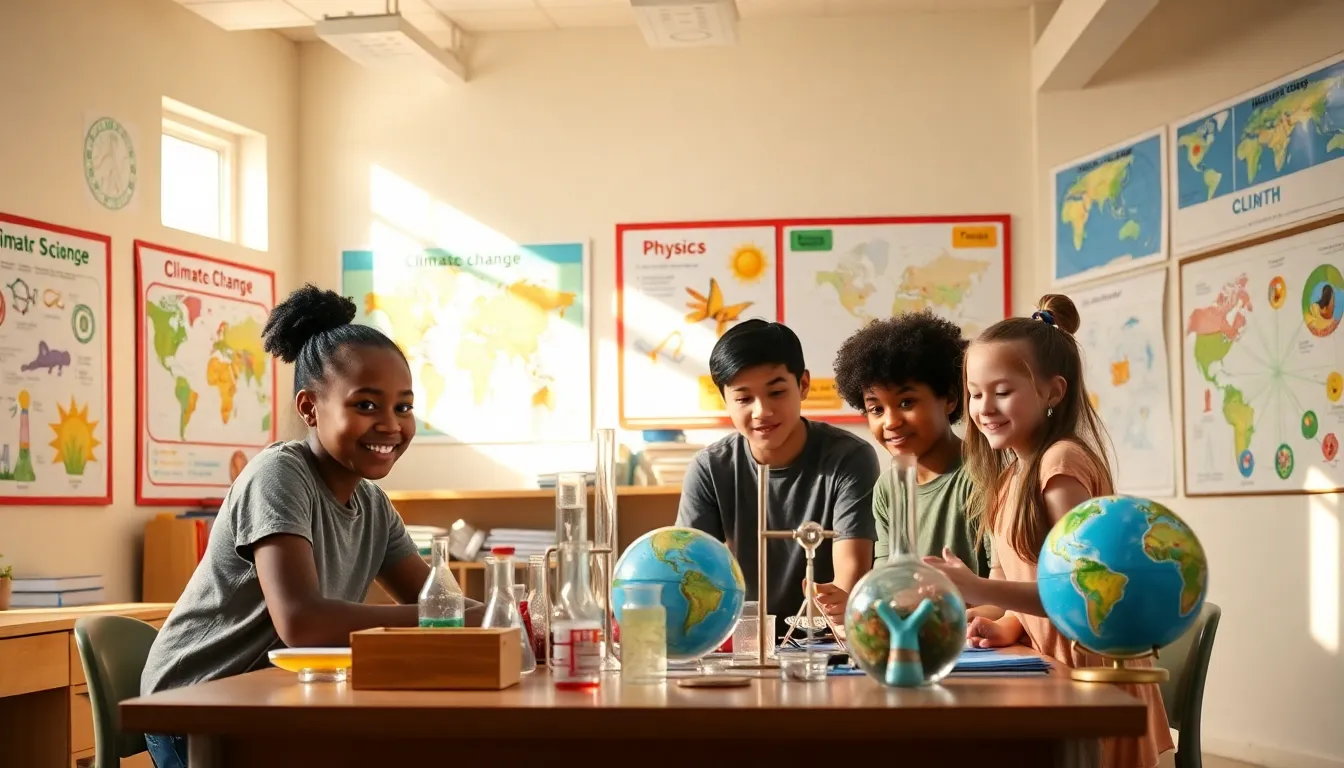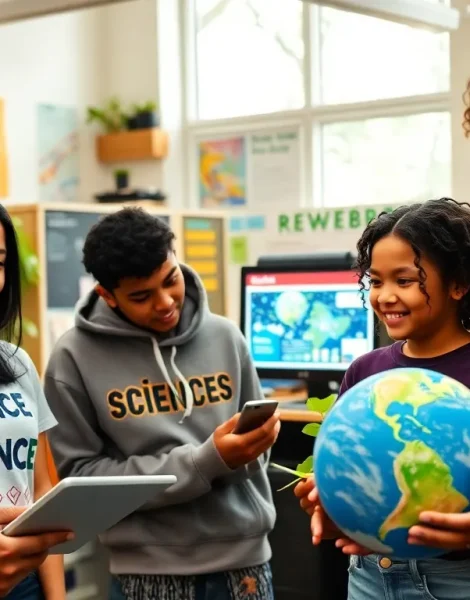In an era where interdisciplinary learning is becoming increasingly vital, integrated science education emerges as a beacon of innovation in teaching methodologies. It encourages students to draw connections across various scientific disciplines, fostering not only a deeper understanding but also enhancing critical thinking and problem-solving skills. The integration of platforms like Redwebzine highlights the potential for a more engaging, adaptable, and effective educational experience. This article delves into the core tenets of integrated science education, its benefits, and the transformative role Redwebzine plays in this educational landscape.
Table of Contents
ToggleUnderstanding Integrated Science Education

Integrated science education breaks down the barriers between traditional scientific disciplines. Instead of treating physics, chemistry, biology, and earth sciences as isolated subjects, integrated science encourages a holistic approach. It emphasizes the relationships and interactions between various scientific fields, allowing students to explore real-world issues through multiple lenses.
For example, by studying climate change, students would investigate not just the environmental impact (biology) but also the chemical processes involved (chemistry) and the physical laws affecting it (physics). This interconnectedness enriches the learning experience and promotes a more comprehensive understanding of science as it exists in reality.
Benefits of Integrated Science Education
The benefits of integrated science education are manifold.
Holistic Understanding
It fosters a holistic understanding of scientific concepts, helping students see the relevance of science in everyday life. This method encourages inquiry-based learning, where students ask questions and seek answers by applying knowledge from different disciplines.
Enhanced Engagement
Students often become more engaged when learning in context. Integrated lessons can incorporate hands-on experiments, collaborative projects, and real-world problem solving, all of which are proven to enhance student motivation and retention.
Development of Critical Skills
Also, integrated science education promotes essential skills such as critical thinking, collaboration, and communication. These skills are requisite for success in both academic and professional realms.
Preparation for Future Challenges
As the global landscape becomes increasingly complex, preparing students for multidisciplinary challenges will empower them to tackle real-world problems more effectively.
Redwebzine: A Catalyst for Innovation
Redwebzine acts as a significant catalyst in the realm of integrated science education. By utilizing digital platforms, it provides a rich repository of resources that cater to diverse learning styles.
Modern Educational Tools
This platform offers interactive lessons, videos, and articles that students can engage with at their own pace. Such modern educational tools enhance the learning experience by providing access to up-to-date scientific information and research.
Community Engagement
Besides, Redwebzine fosters community engagement by encouraging students to participate in forums and discussions. This exchange of ideas enhances learners’ perspectives, making science a community-driven try rather than an isolated subject.
Curriculum Development in Integrated Science
Developing a robust curriculum for integrated science education requires careful planning and collaboration among educators.
Interdisciplinary Collaboration
Educators must work together to create lessons that integrate science disciplines meaningfully. This collaboration can lead to the development of interdisciplinary projects that are relevant to students’ lives.
Aligning Standards and Goals
Also, aligning curriculum with national and state science standards is crucial. Implementing assessments that measure understanding across disciplines ensures that students are not only absorbing information but also synthesizing it effectively.
Continuous Assessment and Feedback
Continuous assessment is essential to understanding the effectiveness of integrated science teaching. Feedback loops enable educators to adjust their instruction based on student performance, further enhancing the integrated learning experience.
Challenges in Implementing Integrated Science Education
Even though the advantages, implementing integrated science education does come with its challenges.
Resistance to Change
One of the primary hurdles is the resistance to change among educators. Traditional teaching methods have long been entrenched in educational systems, making it difficult for some educators to shift their approach.
Resource Limitations
Also, adequate resources are crucial for implementing integrated curricula effectively. Many schools may lack the necessary tools, such as technology or training for teachers, to help an integrated approach.
Assessment Difficulties
Another significant challenge lies in assessment. Traditional testing methods may not capture the depth of understanding gained through integrated learning. Developing new assessment methods that adequately reflect students’ interdisciplinary knowledge is crucial yet challenging.
Future Prospects and Innovations
The future of integrated science education looks promising, particularly with advancements in technology and educational research.
Innovative Learning Environments
As more educational institutions recognize the importance of integration, innovative learning environments will emerge. Virtual reality (VR) and augmented reality (AR) can create immersive learning experiences that break down the barriers of traditional classrooms.
Global Collaboration
Besides, global collaboration among educators and institutions can fulfill the demand for diverse learning experiences. Platforms like Redwebzine could help international exchanges, allowing students to engage with peers in different countries, further broadening their understanding of global scientific issues.
Lifelong Learning
Finally, as society increasingly turns toward lifelong learning, integrated science education will adapt to cater to adult learners and professionals with ongoing education needs.
Conclusion
In sum, integrated science education offers a transformative approach to learning, encouraging students to make connections across various scientific disciplines. With the support of innovative platforms like Redwebzine, educators can enrich their teaching methods and foster a more engaging learning environment. While challenges remain in its implementation, the future prospects of integrated science education continue to inspire both educators and students alike. As science becomes ever more interconnected, fostering such an approach will undoubtedly prepare learners to tackle the complexities of the modern world.









